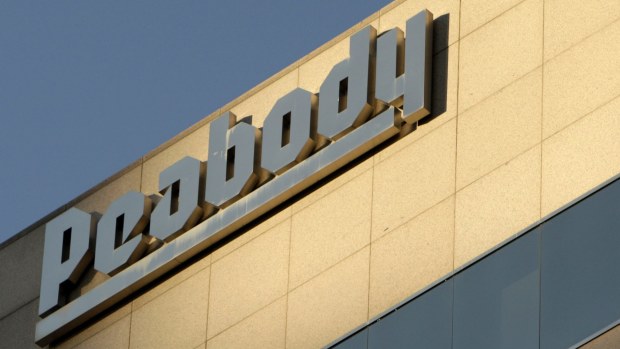Australian banks caught in Peabody legal action
Three of Australia's big four banks could be hit by an attempt by bankrupt coal producer Peabody Energy to reclassify some of its long-term debt as current liabilities, which would favour unsecured creditors over secured lenders, including the big banks.
The North American giant filed for chapter 11 bankruptcy protection in April with $US10 billion of debt. However, its Australian operations are not affected by the move and continue to operate as normal. Most of the funding provided to Peabody by Australian banks is to this unscathed Australian arm of the coal giant.
However, sources said three of the big four banks – Westpac, ANZ and National Australia Bank – have made loans to Peabody's head stock. These loans are relatively small, at around $25 million each.

Peabody Energy headquarters in St. Louis. Jeff Roberson
But these loans could be affected by Peabody's lawsuit against secured creditor Citibank and Wilmington Savings Fund Society, a trustee for other secured creditors, which was filed last week in the US Bankruptcy Court in St. Louis.
The company asked the court to rule that long-term debt should be considered part of current liabilities. Such a ruling would favour unsecured creditors over secured ones, and as such will have a major impact on how much each group will recover from the bankruptcy.
The Australian banks had been anticipating such an action and are understood to be sanguine about its outcome.
ANZ is believed to have written off its exposure to Peabody's North American headstock, while Westpac has on-sold its debt.
The size of the Australian banks' exposure to Peabody Australia is not yet known, although the three banks did note recently that bad-debt provisions in the mining sector have increased due to one or two "large exposures".
Peabody wants the issue solved before October 10, when it needs to meet a debtor-imposed deadline to have a plan in place to emerge from Chapter 11. Peabody wants to emerge from bankruptcy by April 2017, and asked for the matter to go to mediation in order to speed up the process.
"Time is of the essence," Peabody said in its court filing on Friday.
At issue is Peabody's consolidated net tangible assets, known as CNTA, which are calculated by subtracting current liabilities from total assets.
A higher CNTA would increase the amount that secured creditors such as the Australian banks, Citibank and Franklin Resources could recover, while a lower one would put more in the pot for unsecured creditors, including investment funds Aurelius Capital Management and Elliott Management Corporation.
Aurelius and Elliott, two of the most litigious investment funds on Wall Street, have spent years battling Argentina in US courts over the country's 2001 default.
Secured creditors believe they are entitled to $US1.5 billion of claims, while unsecured creditors think those claims are worth only about $US450 million, two lawyers involved in the process told Reuters.
The lawyers spoke on condition of anonymity because creditor groups' official replies to Peabody's lawsuit have not yet been filed with the court.
- WITH REUTERS
Subscribe to gift this article
Gift 5 articles to anyone you choose each month when you subscribe.
Subscribe nowAlready a subscriber?
Introducing your Newsfeed
Follow the topics, people and companies that matter to you.
Find out moreRead More
Latest In Mining
Fetching latest articles